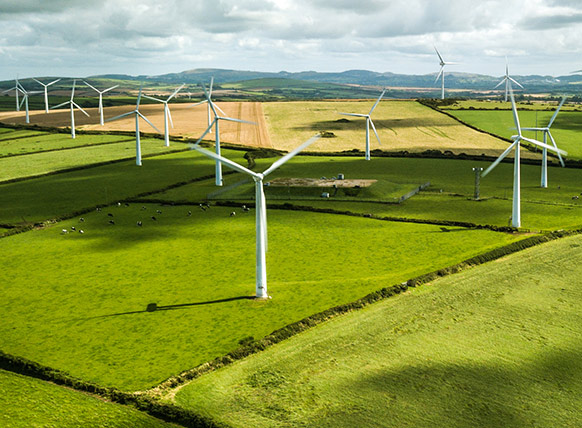

10 tips for a low carbon lifestyle


10 tips for a low carbon lifestyle
You only need to watch the news to see the impact that the climate crisis is having on the environment – from the wildfires in Australia1 to recent flooding across the UK2.
The UK Government declared a climate emergency in 2019 and has a target to reduce all greenhouse gas emissions to net zero by 2050 – but we all need to play our part if we’re to achieve this.
While many of us are already taking steps to help reduce our personal carbon footprint, we’ve pulled together 10 tips to help you adopt a low carbon lifestyle.
1. Reduce, reuse, recycle
How we get rid of our waste and how much of it there is has a significant impact on the environment3.
Reduce the amount of waste in the first place by choosing longer lasting products such as reusable straws and avoiding disposable items like cutlery and coffee cups. Or choose to go paperless where you can; you’ll find many companies, like us, are happy to send you an online bill, statement or receipt.
Before throwing anything away, consider whether it can be reused. Try to mend broken items before getting rid of them and donate unwanted items to charity.
And check before you buy how to recycle items you no longer need – you’ll find that there’s lots of easily recyclable options from shampoo bottles and food packaging to small electrical items such as kettles and TVs.


2. Switch to renewable energy
Renewable energy produces significantly less greenhouse gases than fossil fuels so powering your home with renewable electricity is a great way to reduce your carbon footprint. We provide all our customers’ homes with 100% renewables-backed electricity as standard.
Or why not consider generating your own renewable electricity to make your home even more sustainable? You could install solar panels on the roof of your home and store any excess electricity in a battery to use later. You’ll reduce your reliance on the grid and generating solar electricity doesn’t produce greenhouse gases.
3. Consider your heating use
There are many ways to reduce the CO2 emissions associated with heating your home, from draughtproofing and making sure your home is well insulated to only heating the rooms you’re using or even installing an air source heat pump as a low carbon source of heating.
Check the efficiency of your boiler – how well your boiler works has a big impact on your carbon footprint. The older your boiler is, the less efficient it will be. Upgrade to a new boiler that's energy efficient to help use less gas and spend less on your heating bills.
Read our helpful guide to help keep your boiler working at its best all year round, making sure your boiler is as efficient as it can be.
Using a smart thermostat can give you more control over your heating and reduce your carbon footprint. Using your smartphone’s geolocation, it can turn your heating on or off even when you’re out and track the weather forecast to heat your home more efficiently.


4. Eat seasonal products
Choose fresh produce, like fruit and vegetables that are in season – these foods are kinder to the environment and will also taste better.
And if you have a green thumb, try growing your own. Whether it’s a herb garden on your windowsill, a few vegetables growing in your garden or a full allotment – it’s a great way to reduce the carbon footprint of your food4.
Reducing your food waste can also make a huge difference to your carbon footprint5. Try planning your meals ahead, only buying what you need and freezing any leftovers. And to help you become even more sustainable in the kitchen, have a look at our list of energy saving recipes.


5. Choose to walk, bike or take the bus
Transportation, including cars and planes emit pollutants, that damage both the environment and the air we breathe. Low carbon travel such as public transport, cycling, walking and limiting the use of your car emits lower greenhouse gases.
Air travel is the most environmentally damaging method of transport6, so instead of jetting off on a holiday why not consider spending time in the UK.
But if you do need to fly somewhere, you could always consider offsetting your carbon emissions.
6. Turn off your devices
Appliances such as TVs, microwaves and even phone chargers all use electricity unless turned off at the socket – so turn them off at the source once you’re finished using them. And switch off lights when you leave a room for an easy way to save energy and reduce your carbon footprint.
And if you’re prone to forgetting to turn off your devices and lights, smart lighting and sockets could help. You can control your lights and sockets from wherever you are, meaning you can switch off the TV or your lights even when you’re not at home.
For more control over your energy use, consider getting a smart meter. A smart meter helps you track your energy use and CO2 emissions so you can understand how you use energy and which of your appliances contributes the most to your carbon footprint.
7. Try to avoid items with excess packaging
Many supermarkets are reducing the amount of unrecyclable packaging they sell and now offer packaging-free fresh produce where possible, so you can limit your use of single-use plastic.
Or switch to a zero-waste shop – these shops offer products without any packaging at all. You can purchase everything from cereals and flour to cleaning products and a bamboo toothbrush.


8. Carry your own reusables
Bringing your own reusable bags when you go to the shops helps to save both the environment and wildlife – it reduces the need for plastic bags which take 20 years to decompose7.
And choosing a reusable water bottle has even bigger benefits for the environment as one plastic water bottle takes 450 years to decompose7.
There’s also plenty of places you can refill your bottle across the UK – you can find them on smartphone apps like Refill which lists over 12,000 free water refill stations across the UK.
9. Reduce your water use
There are some small changes we can make in our daily routines that can make a difference and reduce greenhouse gases8 – from taking shorter showers and turning the tap off while brushing our teeth to handwashing dishes instead of using the dishwasher for small amounts of washing up. You could even install water saving devices to reduce both water and energy.


10. Upgrade light bulbs
Switch to energy efficient LED light bulbs to make your lighting more environmentally friendly. LED light bulbs use less electricity and last longer than standard incandescent bulbs – saving energy and reducing the number of bulbs sent to landfill.
From small tweaks to your daily routine to bigger lifestyle changes, there are many ways to reduce your carbon emissions and achieve a low carbon footprint.
1. Oxfam: 5 natural disasters that beg for climate action
2. Carbon Brief: Guest post: Are UK floods becoming worse due to climate change?
3. Friends of the Earth: All you need to know about waste and recycling
4. Gardener’s World: How to reduce your carbon footprint in the garden
5. The Independent: Everything you thought about the carbon footprint of imported food is wrong, says top professor
6. BBC: Should we give up flying for the sake of the climate?
7. WWF: The lifecycle of plastics
8. United Nations: Water can help win the race to limit climate change


Our blog
Read our latest blogs to discover how E.ON is leading the energy transition through smart and sustainable solutions.


100% renewable electricity
We believe in a sustainable future, that's why we provide our customers' homes with electricity backed by 100% renewable sources including wind, biomass and solar, with a fixed tariff.


How to help stop climate change
Learn more about the climate crisis and discover six easy ways you can help stop the effects of climate change.
